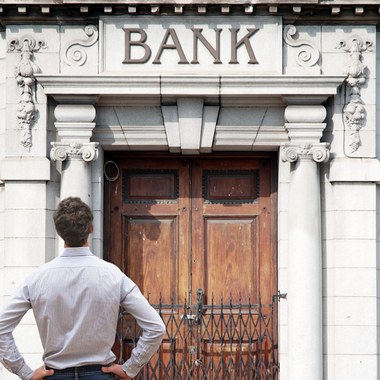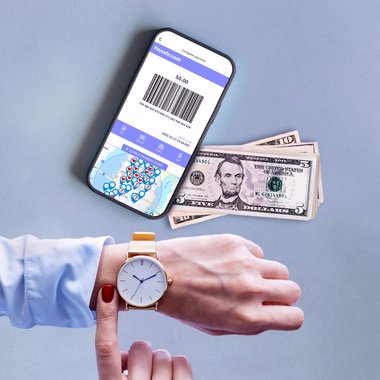Could online cash eliminate card declines?
Sep 23, 2019Credit cards may be over a century old — the first ‘credit cards’, which customers could use to buy on credit from shops on an approved list, were issued by the Provident Clothing Company in 1880 — but they’re still massively popular.

Credit cards may be over a century old — the first ‘credit cards’, which customers could use to buy on credit from shops on an approved list, were issued by the Provident Clothing Company in 1880 — but they’re still massively popular. In 2018, 43% of consumers told us they’d paid for an online purchase with their credit card within the previous month. And a further 33% had paid with their debit card.
This isn’t surprising. As our Lost in Transaction research shows, consumers like using payment methods they know and trust and tend to shun those they perceive as being too new or unknown. So, it makes sense that they’d favour cards, a payment method most of us have grown up with.
It also helps that cards are widely accepted. With 84% of online merchants accepting credit cards and 73% accepting debit cards, it’s safe to say that cards are a ubiquitous form of online payment.
The flipside is that one in ten online card payments are declined. And while a 9% decline rate might not look particularly shocking on paper, it’s a big enough number that 57% of merchants think it’s having a negative impact on their bottom line.
The need for alternative payment methods
While card declines remain a challenge, it’s not all doom and gloom. 65% of merchants say that consumers who have their payment declined go on to try a different payment method, rather than abandoning the transaction altogether.
The upshot is that a card decline isn’t automatically a lost transaction. That said, this statistic also shows how important it is for merchants to have payment alternatives in place if they’re to keep their cart abandonment rates as low as possible.
Automatically offering an alternative when a payment is declined is a widespread practice in many specialised industries. That said, deciding which payment method to deploy first as an alternative when cards are declined isn’t straightforward. Lack of a preferred payment method accounted for 19% of all abandoned carts in 2017. So, picking the wrong alternative could make customers abandon a transaction instead of encouraging them to complete it.
So how do you pick the right payment alternative?
Beyond credit cards
The average consumer owns more than one card. But it doesn’t follow that prompting consumers to try another card when their first payment attempt fails would solve the issue of card declines.
To begin with, this discounts those who only own one card or none at all. This group is much larger than you’d think. For example, according to 2017 World Bank data only 53% of consumers in Germany and 47% of consumers in Austria have a credit card. Penetration rates are even lower in Eastern Europe; according to 2019 data credit card penetration in Poland is 17%, and is lower still in Bulgaria (14%), Hungary (13%), and Romania (12%).
More to the point, far from facilitating the transaction, requiring consumers to input new card details after a decline may cause more friction. Some may want payment to be taken from a specific account. And others may be wary of giving away a new set of financial details.
Other payment methods, while possibly avoiding the need to give merchants new financial details, are yet to enjoy widespread acceptance.
The case for online cash as the first alternative when cards are declined
Offline, cash is often customers’ fallback when a card is declined. In fact, despite the rise of contactless and other cashless payment methods, 87% of consumers still pay for goods in cash. And, 83% visit ATMs at least once a month.
Clearly, cash is far from being dead. Rather, our Lost in Transaction research shows that the appetite for paying in cash is increasingly making its way online.
This makes perfect sense, because online cash replacement systems hit all the right notes:
- Cash is universally accessible, including by the 31% of adults who still don’t have access to a bank account. With Paysafecash, for instance, the customer simply scans a barcode and pays in cash at the nearest payment point.
- It’s private and secure. Paying with cash means consumers don’t have to give out their financial details over the internet.
- From a merchant’s perspective, cash means 100% payment guarantee, with no risk of chargebacks.
To date, only 30% of merchants accept online cash replacement systems. But 56% believe a significant number of consumers want to pay with cash online. So much so, that the number of merchants that accept online cash payments is expected to increase by 50% before the end of 2020.
For those merchants who do start accepting online cash payments, the benefits are clear. Cash payments aren’t only secure for consumers, they also guarantee merchants get paid.
But, more importantly, accepting online cash means merchants can reach new customers and make more sales.
And, in an increasingly complex and competitive landscape, that could give them an invaluable edge.
Want to start accepting online cash?
With direct integration through our API, a verified shop plug-in or indirect integration through one of our verified PSPs, Paysafecash makes offering your customers the option of paying in cash online quick and easy.
Get in touch to discuss your needs.

